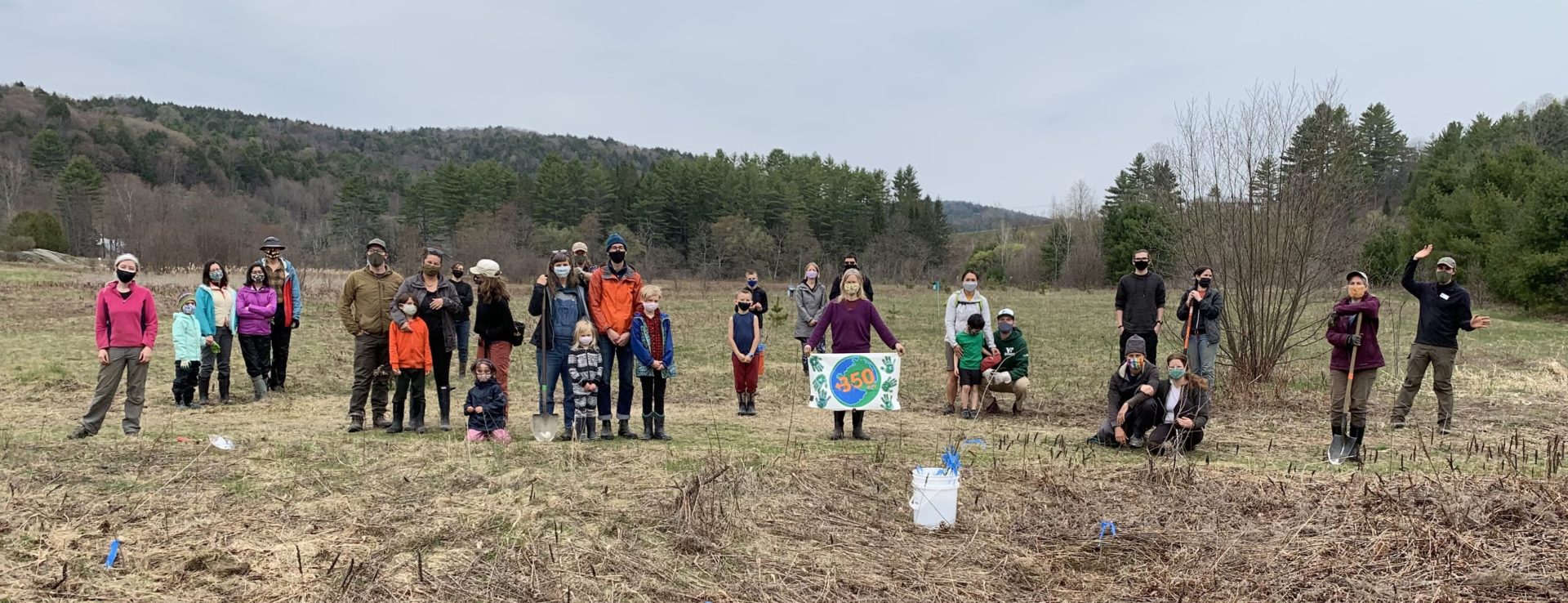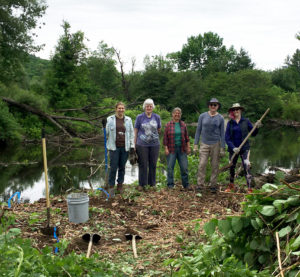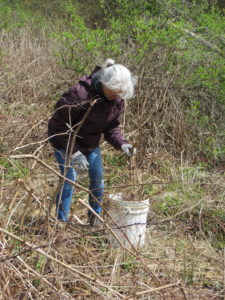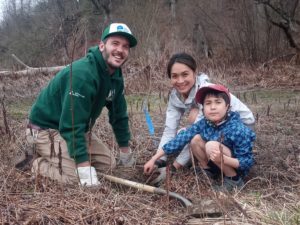Conservation and Community at NBNC

by Braden DeForge, 2021 Conservation Stewardship AmeriCorps Member
Sitting on the floor of the Nature Center on a hot June afternoon, we sifted through envelopes of photographs archiving the changes the land we call North Branch Nature Center has undergone. A photo taken from Otter Rock, grabs my attention: At this popular swimming destination for visitors and beavers alike, what was once a bend in the river dominated by native vegetation is today a vigorous stand of Japanese knotweed.
I took on the responsibility of coordinating a weekly volunteer crew of community members to engage in habitat restoration throughout the 2021 field season. For many of us, this was one of the first public events we had participated in since the start of the pandemic. It became apparent how important these gatherings were in offering space for people to come together and share experiences outdoors.
Each week brought something new, and we left each session impressed by what a small team committed to restoring the land could accomplish. June soon became November, and our group had removed knotweed along the riverbanks and honeysuckle crowding the understory of our riparian forests. Along the way, we replanted these areas with 475 native shrubs and trees acquired in partnership with local nurseries and other organizations. Once established, these plants will produce nuts, seeds, and fruit, acting as keystones of the landscape and important food resources for wildlife and people alike.
“Volunteering is the best antidote I know to climate despair. Seeing small, concrete changes on the local level can help us view the big picture with some sense of hope, knowing that millions of others around the world are participating in these small, decentralized acts of reparation.” ~Dana G., NBNC stewardship volunteer
Why remove these invasive species from the landscape? A diverse understory of shrubs and trees is better for birds, who each need unique structures and resources for building nests and rearing chicks. Invasive species drastically outcompete pre-existing biodiversity, provide little to the local food web, and make our riverbanks more prone to erosion. The long history and co-evolution of species assemblages on the Vermont landscape make them mutually reliant, and our efforts to restore them all the more important.
As the days grow longer and the summer months approach, planning continues for stewarding this land. Through the ongoing efforts of our community, we hope to continue management of our invasive plant populations while restoring diverse, food-bearing native species. A central part of our goal of cultivating this wild edible landscape is the creation of a community orchard in 2022. Thank you to everyone who joined us during the 2021 season and keep an eye out for opportunities this coming summer, we hope to see you in the field!




